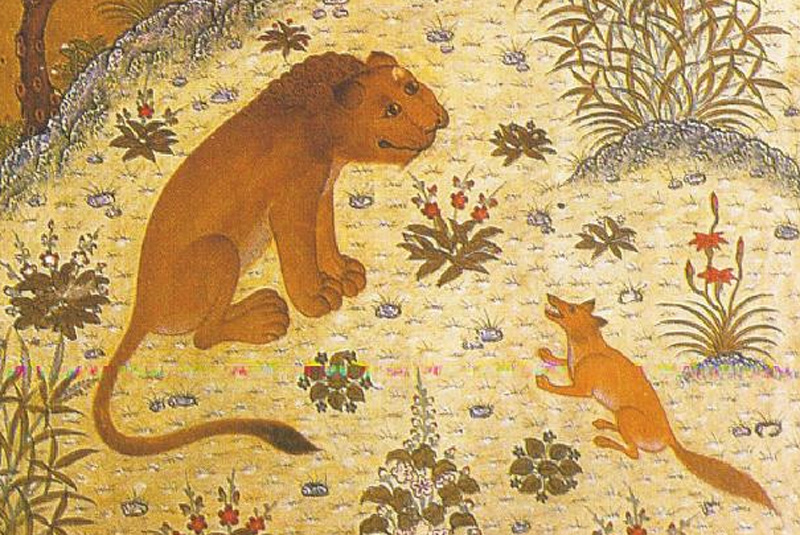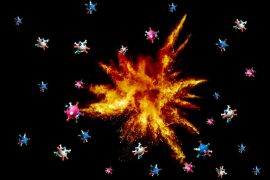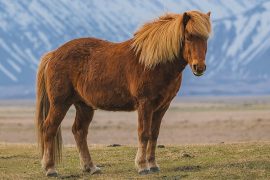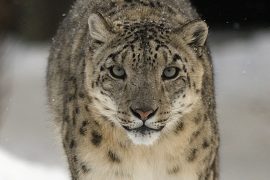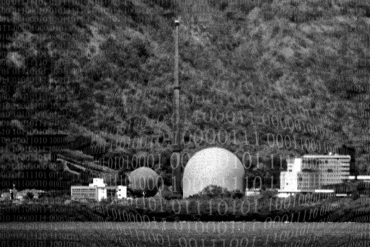Applying lip gloss, sandwich spread, and shaving cream are commonplace activities. However, in Rohan Chakravarty’s Green Humour comic series, these otherwise mundane activities are imbued with a sombre tone.
As we transition from one panel to the next, the innocent lip gloss, sandwich spread, and shaving cream transform into the blood of various animals that might have been affected during their production process. The blood is even labelled: “Bornean Orangutan, Helmeted Hornbill and Sumatran Rhinoceros,” a poignant reminder of the fatal effect that unsustainable production of palm trees/oil has on these innocent animals.
Green Humour, India’s first internationally syndicated comic strip, skilfully blends words and images, employing humour to critique anthropogenic activities incisively.
In a world increasingly rattled by one environmental crisis after another, such environment-themed comics or “ecocomics” are taking centre-stage in unravelling the intricacies of ecological issues and concepts, aiming to reach a wider audience and inspire action in addressing environmental challenges.
“Greening” comics
Environmental comics are a captivating subset of comics, cartoons, and graphic novels that explore vital concepts, issues, and information related to the environment. For instance, Philippe Squarzoni’s acclaimed Climate Changed: A Personal Journey through the Science meticulously documents the scientific aspects of climate change, while Rachel Hope Allison’s I’m Not a Plastic Bag ingeniously personifies the notorious Great Pacific Garbage Patch. Step into the realm of these vibrant masterpieces, where the environment comes alive with each turn of the page, beckoning all to embrace the harmony between knowledge and entertainment.
The “comics experience” in environmental comics lightens the burden on the reader in visualizing various aspects of nature and natural events. Environmental comics achieve this by skillfully combining words and images, harnessing the power of expressive language and the impact of simple yet compelling visuals.
In the era of the Internet, where images and videos rule the roost, the accessibility and reader-friendliness of comics make them a versatile medium. With the advent of Artificial Intelligence and burgeoning AI tools, ecocomics may become easy enough to create and increase its share in the environmental discourse.
The creators
Mainstream comics have always had elements associated with environmental crises. Atari Force, for instance, by DC Comics, published between 1982 and 1986, imagines a group of humans set off on a journey across space to find a habitable planet as the Earth suffocates from ecological destruction. Captain Planet and the Planeteers, published by Marvel in the early 1990s, features Captain Planet, who champions environmentalism.
Even popular comics featuring Superman, Spiderman and Aquaman have embraced themes of pollution and sustainability, responding to the pressing contemporary calls for greater awareness of these critical issues.
One of the earliest black-and-white comics—”Don’t Say It: Sign It!” (1938)—by Jay Norwood’ Ding’ Darling, a two-time Pulitzer-winning American political cartoonist, highlights the importance of conservation and sustainability. In fact, his comics stand as a powerful example of political activism, fearlessly posing thought-provoking questions to the American political and business class concerning their activities impacting the environment.
Other notable examples include Seppo Leinonen, a Finnish illustrator, whose works feature, in his own words, “small and large creatures and phenomena in both nature and politics,” and Rosemary Mosco, a Canadian comics artist and science communicator known for her talent in demystifying information related to nature and environmental issues.
As we flip through the pages, they are a call to action, urging us to take responsibility for the world we live in. All three of these artists are prominently mentioned and appreciated by Rohan Chakravarty in his Green Humour for a Greying Planet, a selection of comics from the Green Humour series. Recently, comics journalist Joe Sacco’s 2020 graphic narrative, Paying the Land, offers a complex interplay between human rights and the concept of “development.”
Indian ecocomics
Environmental comics by Indian artists, though limited, are themed around unsustainable development, pollution, man-animal conflict, climate change and deforestation. Originally published in 1994 and re-published in 2022, Orijit Sen’s River of Stories, perhaps India’s first graphic narrative, concerns Narmada Bachao Andolan, a grassroots movement against the construction of a huge dam on the Narmada River. Chakra: The Invincible is featured in a comic dedicated to the Sustainable Development Goal (SDG) of Climate Action.
Cartoonist Sumanta Baruah totally calls out the eco-destructive antics of the elite in his works. Sample his comic, which takes a hard look at World Environment Day, questioning the government’s commitments to protect “Only One Earth” while they’re busy making and spreading high-grade weapons that mess up the Earth they claim to care about.
Rohan Chakravarty’s works dominate a significant portion of ecocomics. Incredibly popular for its humour, the dentist-turned-cartoonist’s Green Humour series extensively deals with themes of flora and fauna, climate change, ecological imbalance, man-animal conflict, and the relationship between nature and governance, among many other themes.
His Green Humour series has spawned two collections of comics: Green Humour for a Greying Planet (2021) and the more recent Pugmarks and Carbon Footprints (2023), which consists of comic strips about wildlife and nature. Consider his Naturalist Ruddy: Adventurer, Sleuth, Mongoose, which features an anthropomorphic Ruddy Mongoose, who plays the role of a detective set on “unearthing nature’s most fascinating mysteries” across natural habitats in India.
The Great Indian Nature Trail! With Uncle Bikky, a collaboration with WWF-India and featuring essays by Bijal Vachharajani, has Uncle Bikky, an ornithologist, go on a wildlife adventure with his wildlife photographer niece and their dog across India, exploring the most amazing ecological landscapes.
Call for action
As humanity faces an escalating number of climate crises, there is an urgent need for a versatile medium to effectively create awareness of environmental issues and sustainability.
Environmental comics have emerged as a powerful solution, providing a platform for nuanced discussions on these crucial subjects. With their accessibility and approachability, ecocomics bridge the gap between academia and the general public, urging readers from all walks of life to actively participate in the fight against environmental crises.
-30-
Copyright©Madras Courier, All Rights Reserved. You may share using our article tools. Please don't cut articles from madrascourier.com and redistribute by email, post to the web, mobile phone or social media.Please send in your feed back and comments to editor@madrascourier.com

